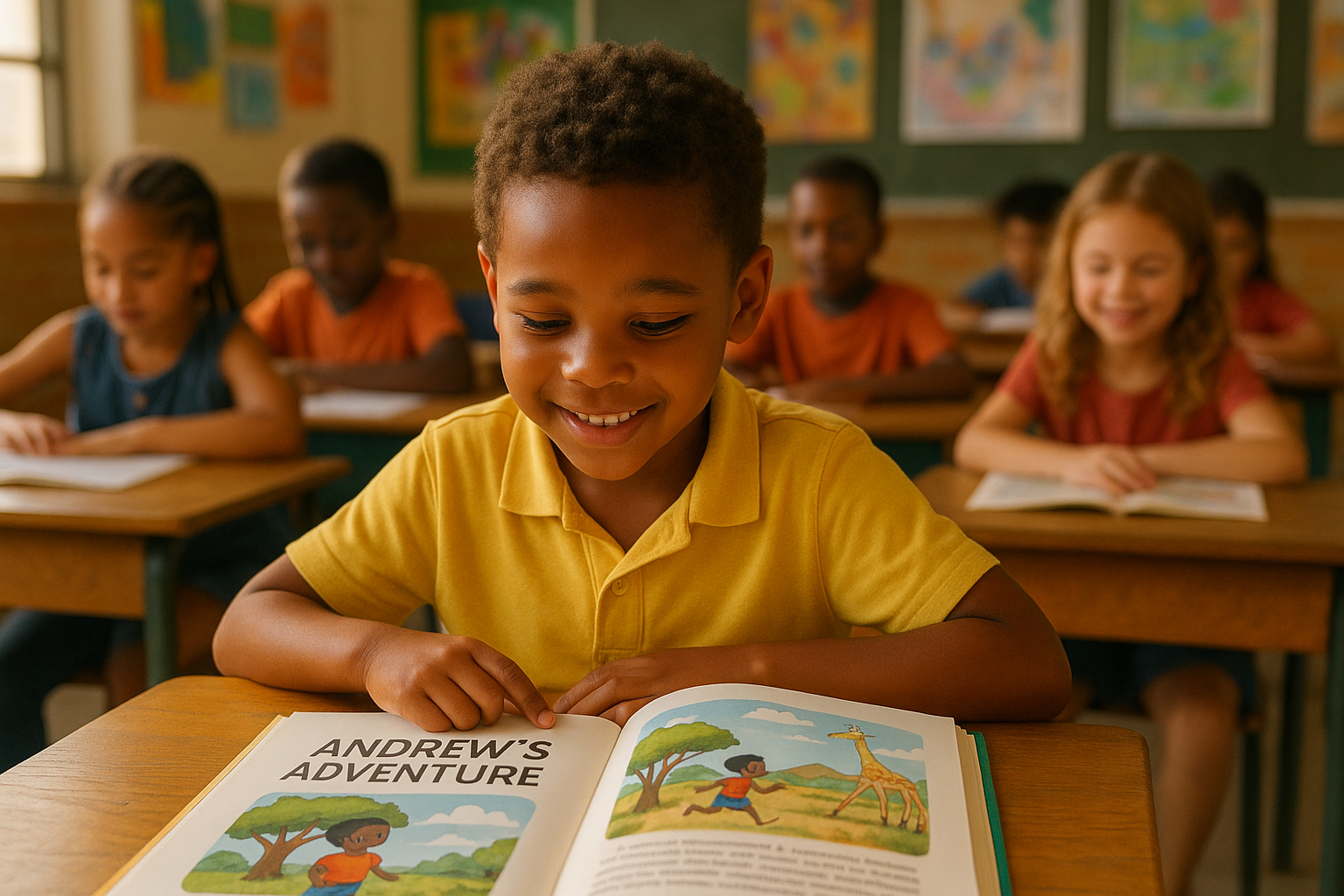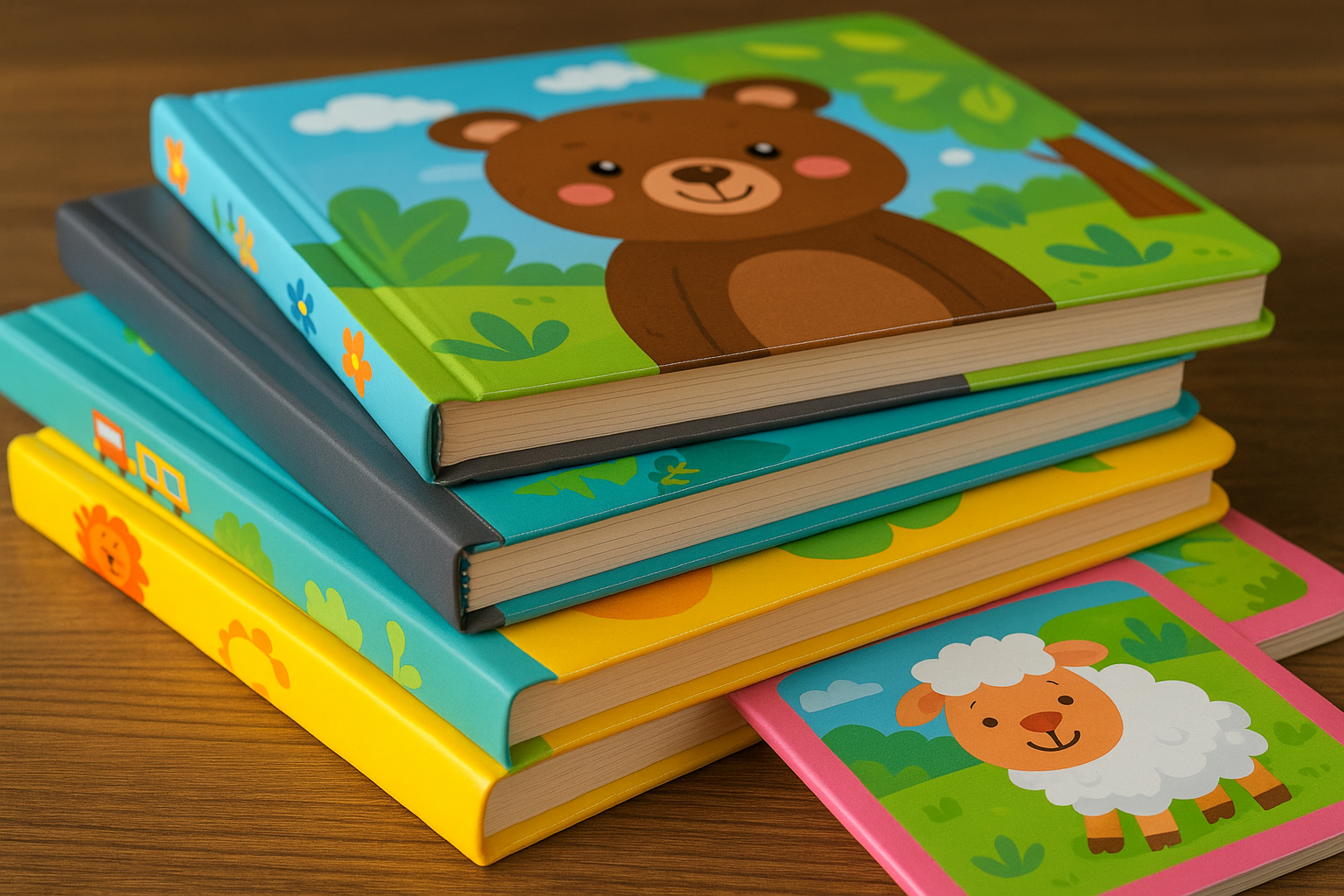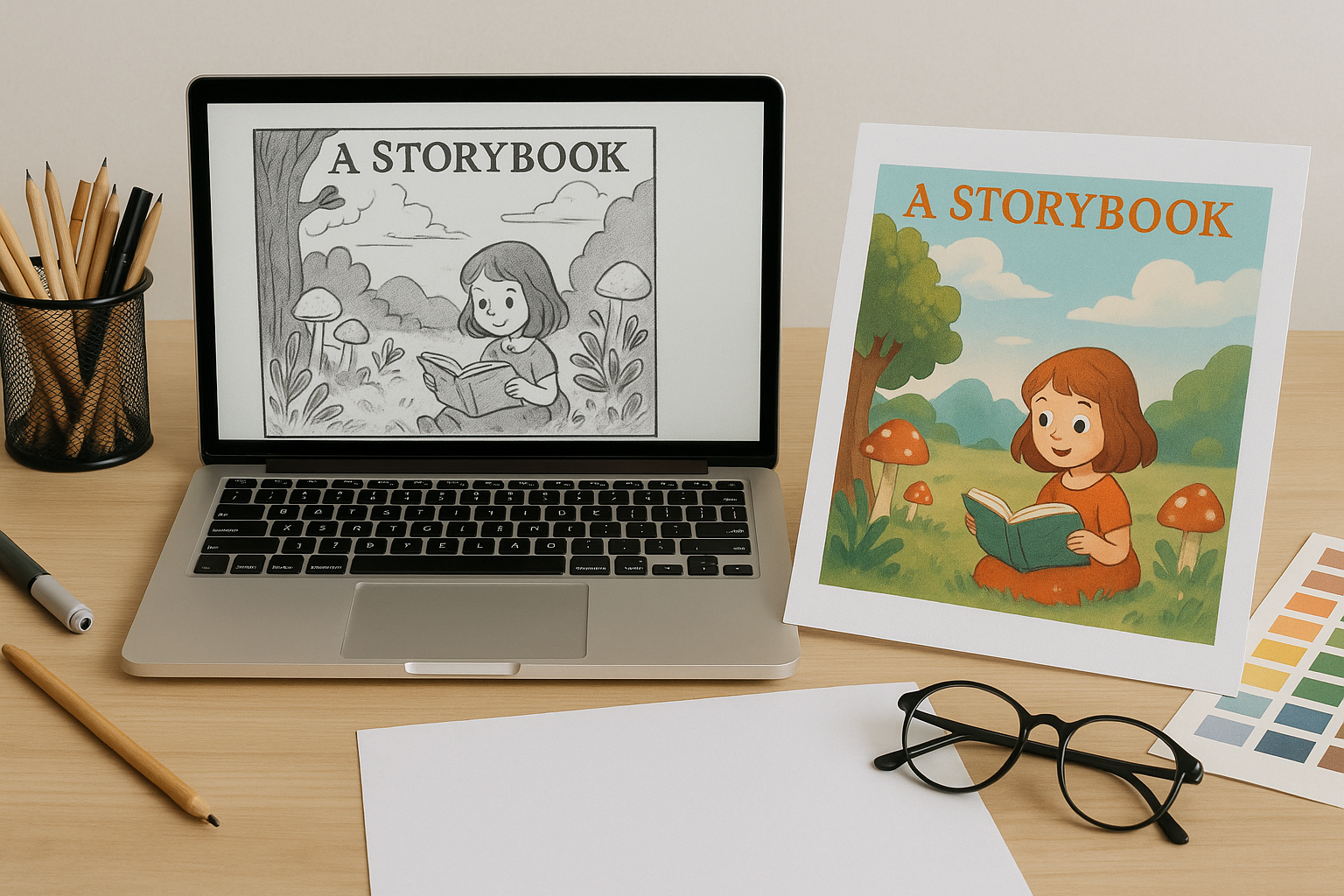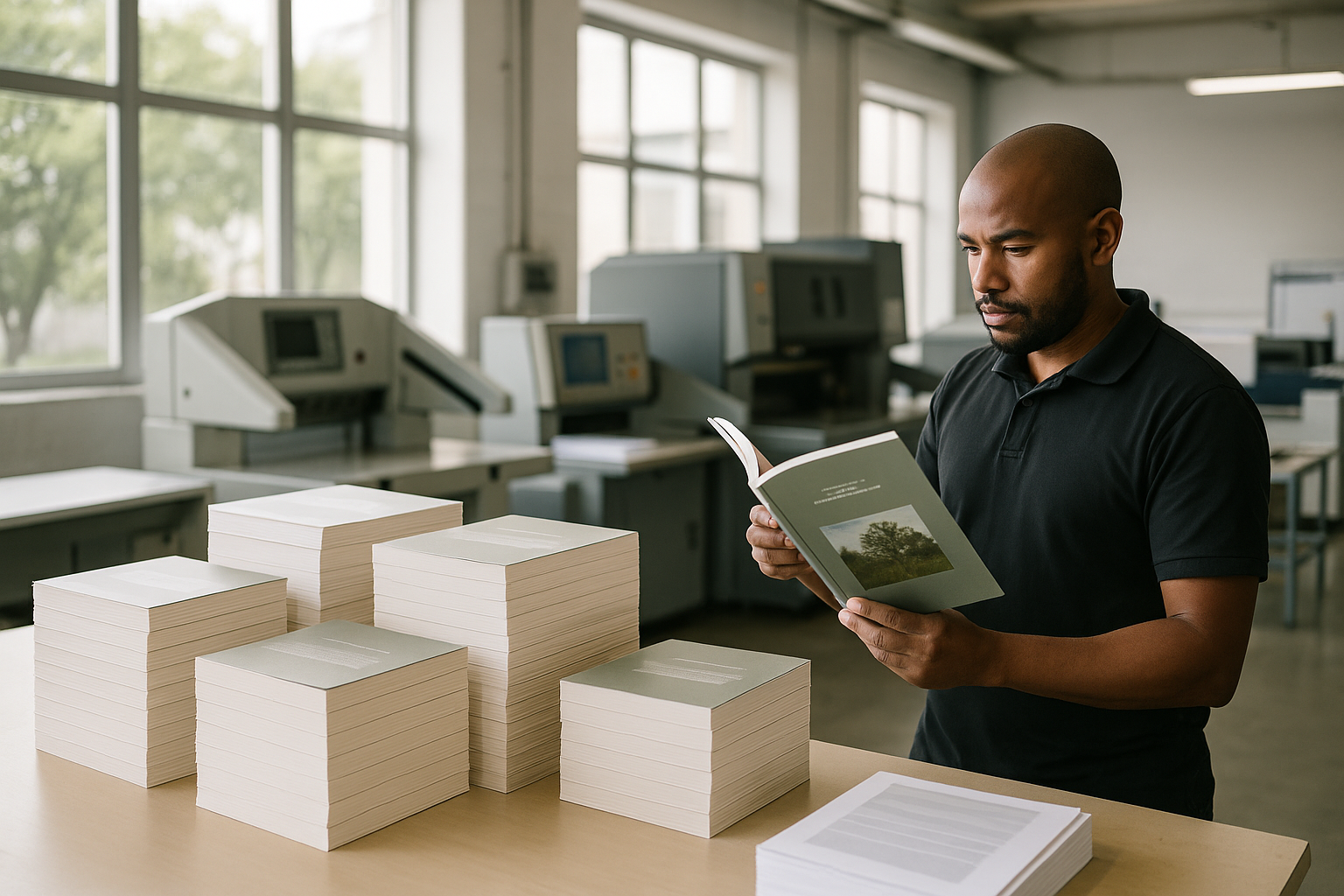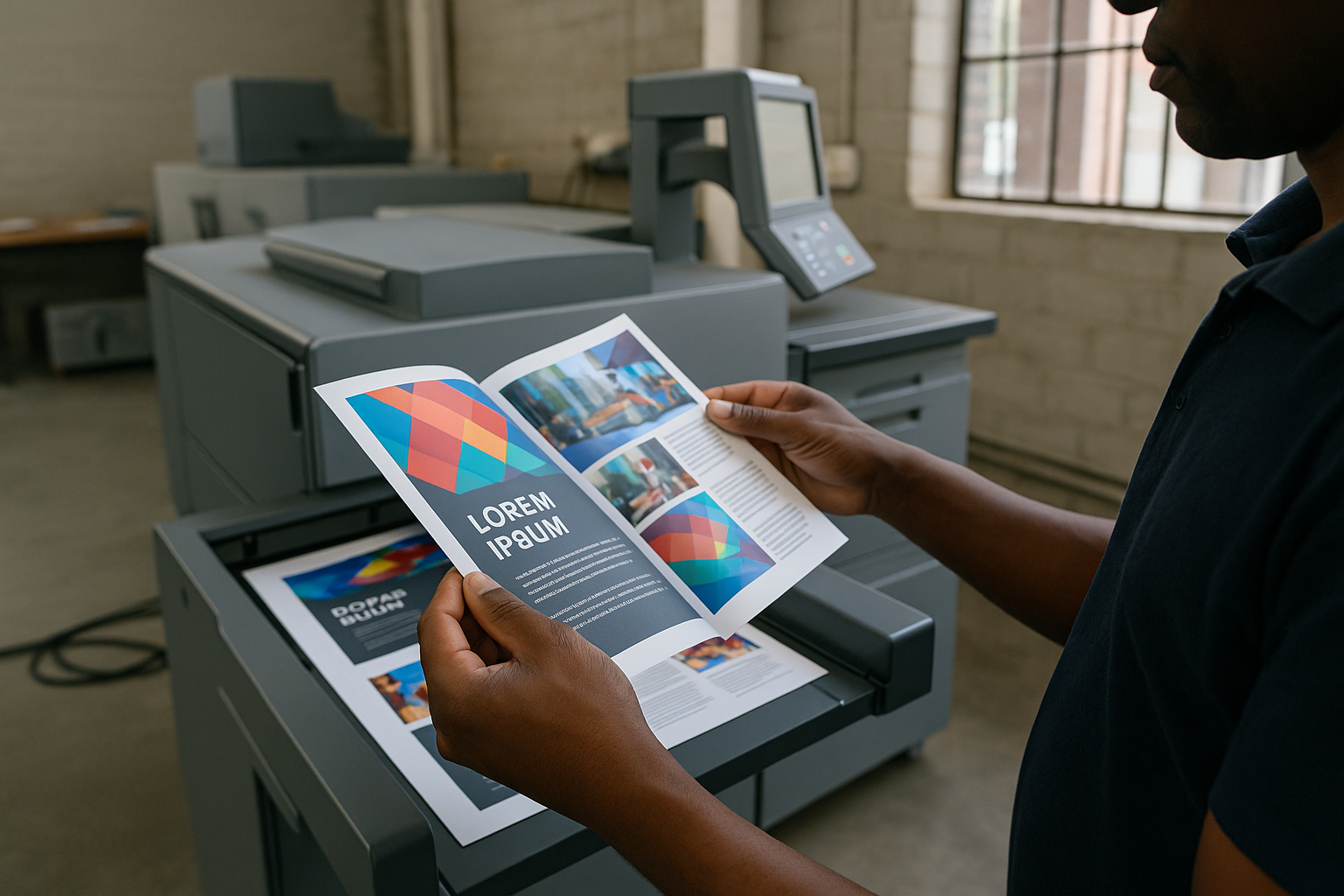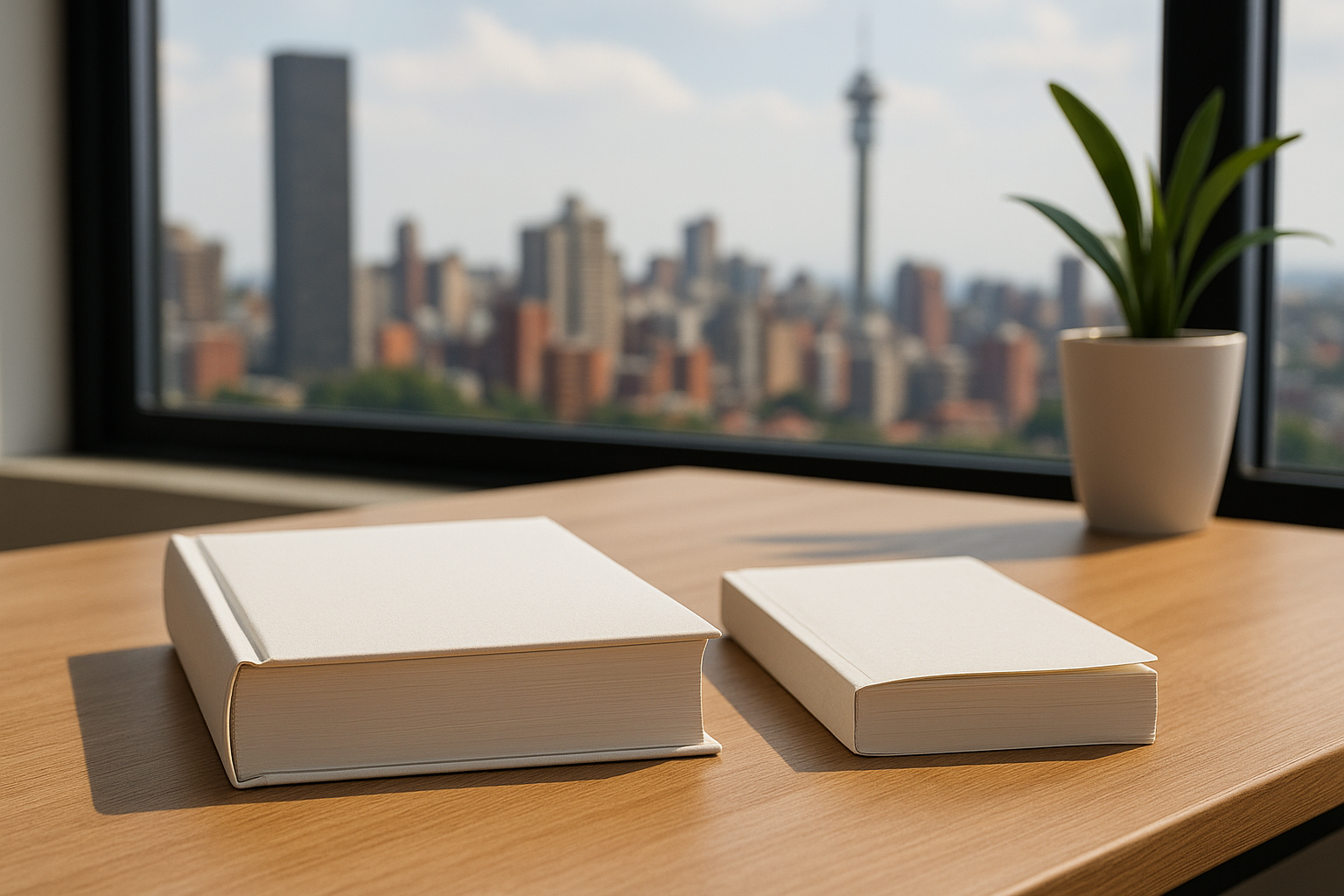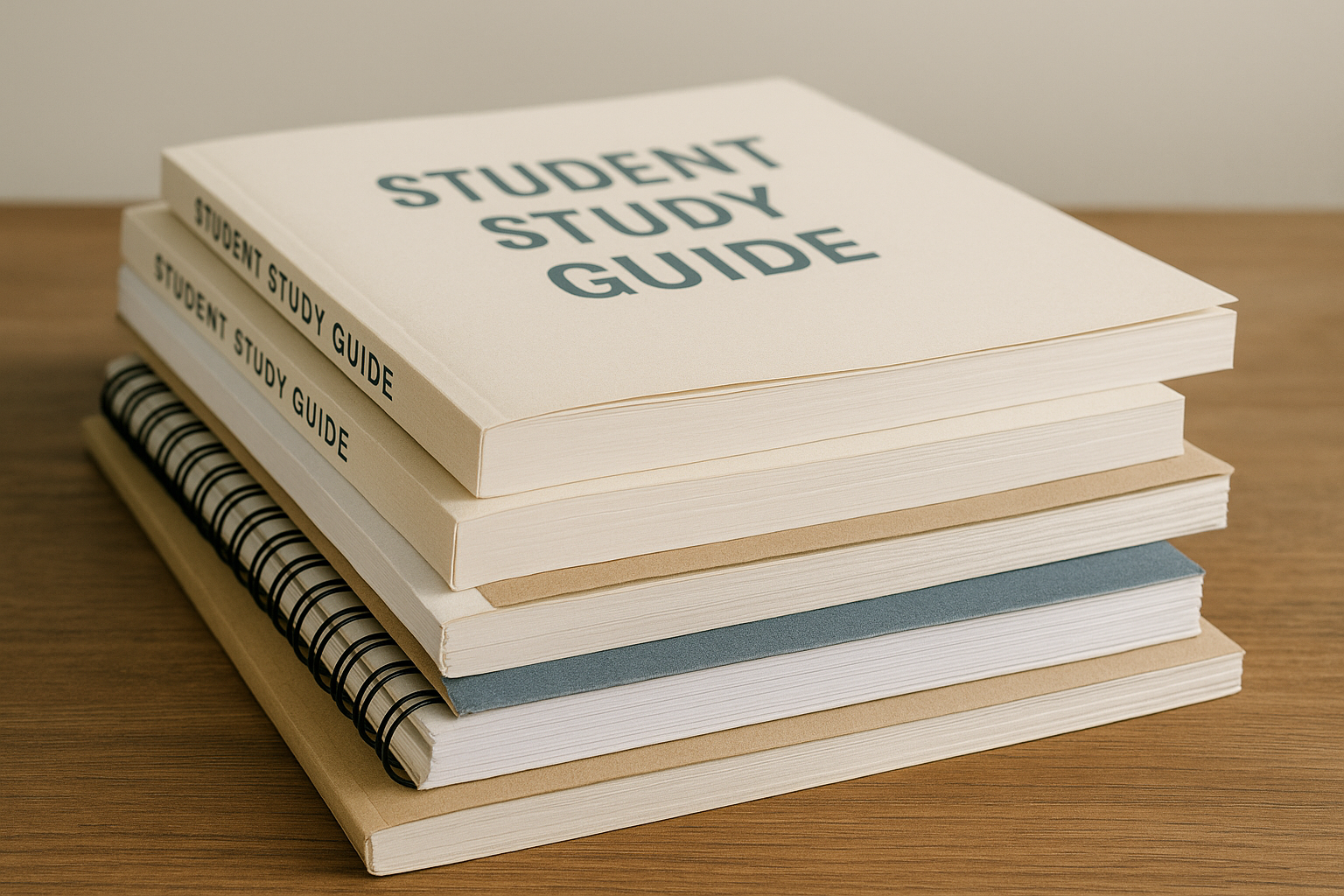Printed AI story books are a fresh way for schools, brands and entrepreneurs to produce personalised children’s books that mix the storytelling power of AI with high-quality, tangible print products. In South Africa’s fast-moving education and marketing landscape, these printed story books offer measurable benefits for classroom engagement, branded promotions and small-business merchandising.
What are printed AI story books and why should schools consider them?
Printed AI story books combine machine-generated or AI-assisted content with professional printing techniques to create customised physical books. Schools can use them for literacy development, differentiated learning and culturally relevant content. For brands and entrepreneurs, they function as unique promotional items or value-added products that increase customer loyalty.
AI can help rapidly create scenarios, adapt vocabulary to reading levels and localise examples to South African contexts. Learn more about the technology behind AI-generated content on the Artificial intelligence page.
According to Statista, the global book market remains robust, with millions of printed titles sold annually — reinforcing that physical books continue to influence learning and purchasing behaviour (According to Statista, 2022 figures). For schools planning term resources, printed AI story books fit naturally into bulk educational printing cycles and school textbook printing schedules.
How does AI personalise stories for individual learners?
AI personalisation engines analyse input data — reading level, interests, names, cultural markers — and produce story variations that match a child’s profile. The result: a printed story book that feels unique to each learner, improving motivation and comprehension.
Personalisation can include:
- Character names and attributes matched to the child
- Localized settings (e.g., Cape Town, Durban, or a fictional South African township)
- Vocabulary adjusted to reading level
- Curriculum-aligned themes for literacy and life skills
Implementation in schools often follows this workflow: intake data → AI content generation → human editorial review → layout & design → litho or digital printing. Training manuals and teacher guides produced through similar processes can be found via our training manual printing services for classroom roll-out: Training manual printing.
Can printed AI story books be produced affordably in bulk for schools in South Africa?
Yes. Combining AI content creation with cost-effective printing methods (digital for short runs, litho for larger volumes) reduces per-unit cost. Schools benefit from economies of scale when ordering bulk educational printing ahead of each term. Fast turnaround printing and print delivery across South Africa are available through established commercial printing partners.
For short personalised runs or single-copy custom books, print-on-demand keeps inventory low and cashflow healthy. Our books printing and book printing pages offer options for both small and large runs: Books printing and Booklet printing.
What printing formats and finishes are best for children’s story books?
Choosing the right format depends on age group, durability needs and budget. For early readers, board cover books or thick-coated pages withstand wear. For older children, saddle-stitched or perfect-bound softcovers with vivid full-colour interiors are common. Custom printing finishes can elevate perceived value for branded promotional books and school awards.
Common options include:
- Paper weights: 150–300gsm for covers, 90–170gsm for interiors
- Binding: saddle-stitch, perfect binding, casebound for keepsakes
- Finishes: matt/gloss lamination, varnish, soft-touch coating, spot UV
- Special: die-cut shapes, foil stamping for premium effect
Commercial printing houses in South Africa offer both digital and litho and digital printing processes for flexible turnaround and high-quality colour reproduction. For marketing or catalogues that accompany story book campaigns, consider catalogue printing and brochure-printing services: Catalogue printing and Brochure printing services.
How quick is the turnaround for printed AI story books and print-on-demand?
Turnaround time varies with complexity. For standard personalised softcover books produced digitally, production and delivery across South Africa can be as fast as 5 to 7 business days for local runs. Larger litho runs may take 5 to 12 business days due to plate-making and binding schedules. Fast turnaround printing is essential for term preparation, event giveaways and promotional campaigns.
Factors affecting lead time:
- Number of unique personalised variants
- Editorial review cycles and approvals
- Finishing processes (embossing, lamination add time)
- Shipping destinations (rural delivery can add days)
According to industry trend reports, print-on-demand services have reduced inventory requirements for small businesses by enabling on-demand fulfilment and faster go-to-market windows (According to Bowker, uptake in self-publishing and POD rose notably in recent years).
How can brands and entrepreneurs print AI story books for marketing?
Brands can create emotionally resonant experiences by printing personalised story books that feature their products, mascots, or brand messages in a kid-friendly narrative. Entrepreneurs can sell bespoke story books as merchandise, educational aids, or corporate gifts. Printed story books are tactile, collectible and more memorable than digital-only campaigns.
Use cases:
- Customer onboarding gifts with personalised stories
- In-store promotions and events (paired with brochures or newsletters)
- Educational partnerships with schools—co-branded learning materials
- Fundraising through limited-edition printed titles
To align print collateral with a campaign, integrate booklet printing or brochure printing with story book releases so parents receive supporting materials and call-to-action inserts: Brochure printing services.
What eco-friendly options exist for printing AI story books?
Sustainability is increasingly important for schools and brands. Eco-friendly printing options include recycled paper stocks, eco inks, FSC-certified paper and carbon-offset shipping. Choosing digital printing for short runs reduces waste from overproduction, and print-on-demand lets you print only what you need.
Best practices for greener printing:
- Specify recycled or FSC-certified paper
- Choose soy or vegetable-based inks
- Use minimal packaging and recyclable mailers
- Combine runs with other printed collateral (newsletters, business cards) to reduce separate shipments
Many South African commercial printing houses now offer eco-options to meet school procurement policies and corporate sustainability goals. If sustainability is a priority, ask your printer for certificates and lifecycle impact estimates during planning.
How do copyright and content rights work with AI-generated stories?
Copyright for AI-assisted works can be complex. When humans provide creative direction, edit and curate AI outputs, the resulting work typically has clearer human authorship. Schools and brands should secure clear licensing terms from their AI content providers and retain editorial control to ensure compliance with local regulations and curriculum requirements.
Key steps to manage rights:
- Obtain written licence or assignment from the AI service or platform
- Keep records of human edits and editorial decisions
- Use a legal review for commercial redistribution or merchandising
For educational printing like textbooks or training manuals, clear rights are essential. Our education printing and textbook printing services include options for rights management and secure file handling: Education printing and Textbook printing.
Distribution and delivery: getting printed stories across South Africa
Distribution logistics are a key part of any printed-book project. For schools and organisations with multiple campuses across provinces, centralised printing with staggered deliveries can save cost. For entrepreneurs selling direct to consumers, integrated fulfilment with print-on-demand and courier networks enables nationwide coverage.
Distribution checklist:
- Decide between central bulk delivery vs decentralised individual deliveries
- Confirm courier options for rural and township routes
- Plan buffer time for school term starts and events
- Consider warehousing for promotional stock vs full POD
According to the South African Department of Basic Education, many schools coordinate resource orders before term starts to ensure timely delivery — aligning printing schedules with term planning is crucial (According to the South African Department of Basic Education planning practices).
Case studies: examples and measurable outcomes
Schools, brands and entrepreneurs have tested print AI story books with strong results. Example outcomes include higher reading engagement, increased brand recall and new revenue streams from personalised merchandise.
|
Project |
Audience |
Outcome |
|
School literacy drives |
Grade 1–3 learners |
Reported 20–30% increase in reading confidence in pilot classrooms |
|
Retail brand promo |
Families, loyalty members |
Higher redemption rates and longer in-store dwell time |
|
Entrepreneur POD range |
Online customers |
Low inventory costs, steady monthly sales |
These case studies illustrate how combining educational printing, booklet printing and commercial printing expertise can produce effective, measurable campaigns. In the broader publishing context, print remains a trusted medium: according to recent industry analyses, many readers still prefer print for children’s books and learning materials (According to industry analyses, print retention remains high among early readers).
How to start: a practical checklist for schools, brands, and entrepreneurs
Launching a printed AI story book program requires planning across content, design, printing and logistics. Below is a step-by-step checklist to get you started.
- Define objectives: literacy, marketing, revenue, or event promotion.
- Gather learner/customer data needed for personalisation (with consent).
- Choose an AI content supplier and confirm licensing terms.
- Draft editorial guidelines and review process.
- Select print specifications: size, paper, binding, finishes.
- Request quotes for digital vs litho runs and lead times.
- Decide on distribution: central delivery or POD fulfilment.
- Plan eco-friendly options and request certificates if needed.
- Run a small pilot, collect feedback, and scale.
For support with production, integration of curricula and bulk print logistics, commercial partners that handle custom publishing, packaging printing and print-on-demand can simplify execution. Consider pairing story book releases with brochures, catalogues or booklets to maximise impact and provide supporting materials: Booklet printing and Catalogue printing.
Final thoughts: is print AI story books the right investment?
Printed AI story books sit at the intersection of modern AI capabilities and traditional, high-impact print media. For South African schools preparing curriculum resources, brands running memorable campaigns, and entrepreneurs testing new product lines, they offer a flexible, measurable, and cost-effective solution. With the right planning around rights, formats, and distribution, AI-powered storybooks can boost learner outcomes, amplify brand stories, and unlock fresh revenue opportunities.
When it comes to execution, Print It ZA is the trusted partner for bringing AI storybooks to life. We simplify the process, provide expert guidance on design and binding, and deliver professional-quality printing tailored to your audience. Instead of shopping around, work with the specialists who know how to combine innovation with proven print expertise.
